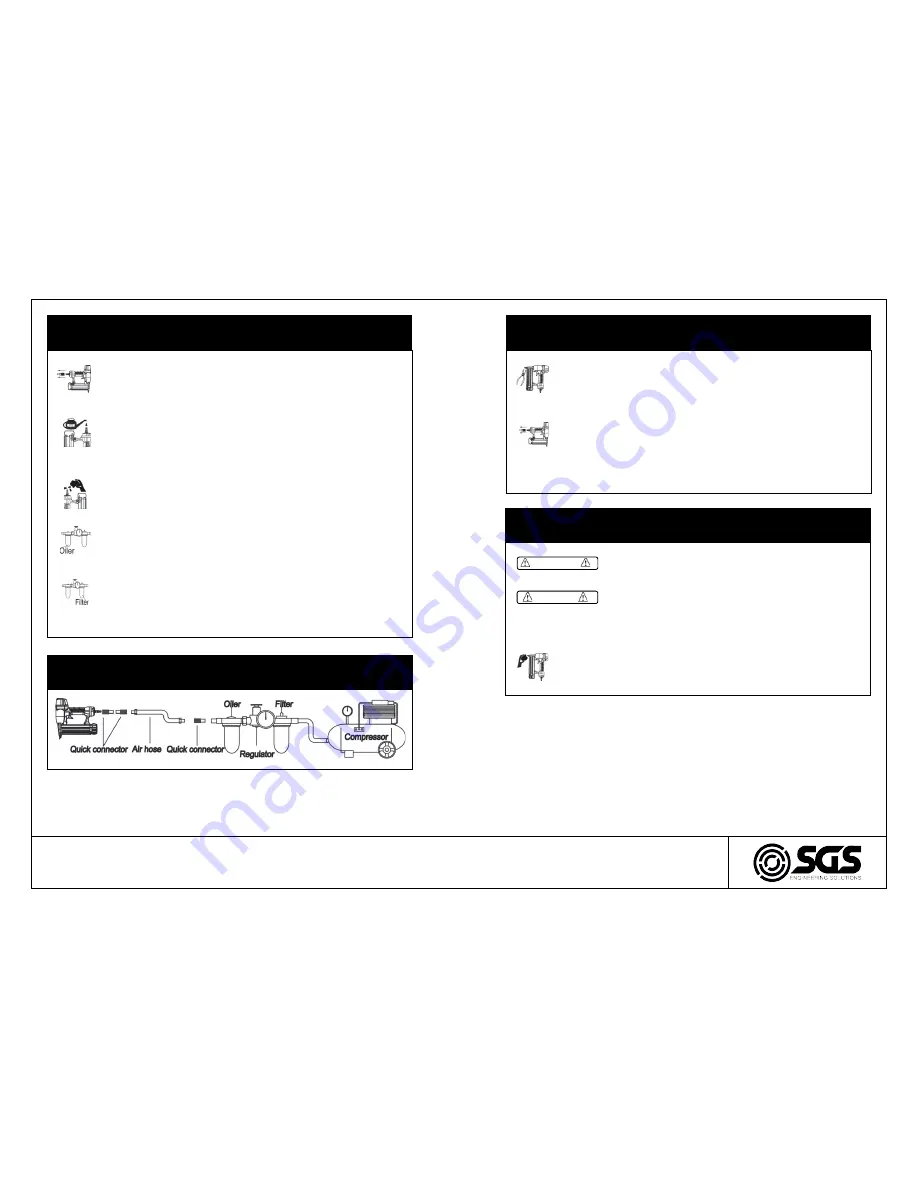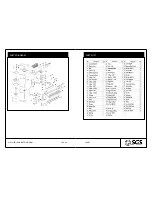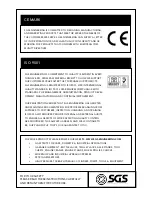
PAGE 7
PAGE 6
LUBRICATING THE TOOL
Disconnect the air supply from the tool before lubricating.
Add a few drops of tool oil into the inlet.
Turn the tool so the inlet is facing up and put one drop of high speed spin-
dle oil into the air inlet. Never use detergent oil or additives. Operate the
tool briefly after adding oil.
Wipe off excessive oil at the exhaust. Excessive oil will damage O-rings in
the tool. If an in-line oiler is used manual lubrication through the air inlet is
not required on a daily basis.
Many air tool users find it convenient to use an oiler to help provide oil
circulation through the tool and increase the efficiency and useful life of the
tool. Check oil level in the oiler daily.
Many air tool users find it convenient to use a filter to remove liquid and
impurities which can rust or wear internal parts of the tool. A filter also
increase the efficiency and lifespan of the tool. The filter must be checked
on a daily basis and if necessary drained.
CORRECT CONNECTION OF THE TOOL
CLEARING A JAM FROM THE TOOL
FASTENER JAMMED IN FASTENER DISCHARGE AREA:
Disconnect air tool from air hose.
Open the nozzle part, grab jammed fastener with pliers and remove.
FASTENER JAM INSIDE MAGAZINE:
Disconnect air tool from air hose.
Pull back on the magazine cover.
Open the nozzle part and remove jammed fastener.
Push the magazine cover forward until the latch catches.
CLEANING THE TOOL
Disconnect tool before cleaning and inspection. Correct all
problems before placing the tool back in use.
NEVER USE PETROL OR OTHER FLAMMABLE LIQUIDS TO
CLEAN THE TOOL. VAPORS IN THE TOOL WILL IGNITE
AND CAUSE THE TOOL TO EXPLODE AND RESULT IN
DEATH OR SERIOUS PERSONAL INJURY.
Remove tar build up with kerosene #2 fuel oil or fuel.
Dry off tool completely before use.
DO NOT SOAK tool with cleaning solutions or damage may occur.
WARNING
DANGER
WWW.SGS-ENGINEERING.COM
























